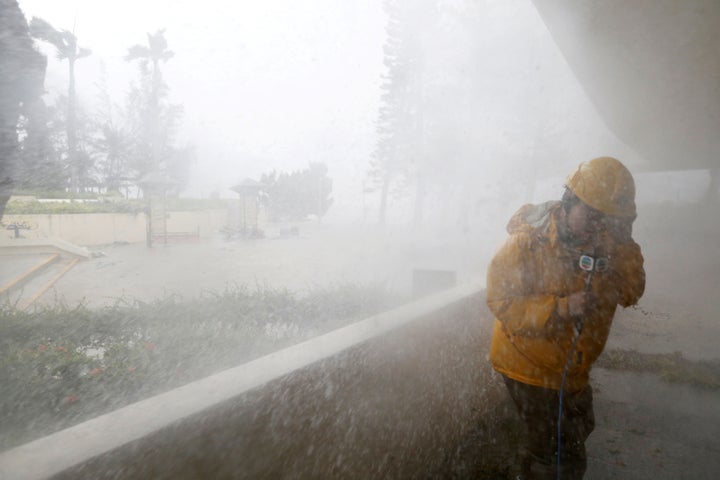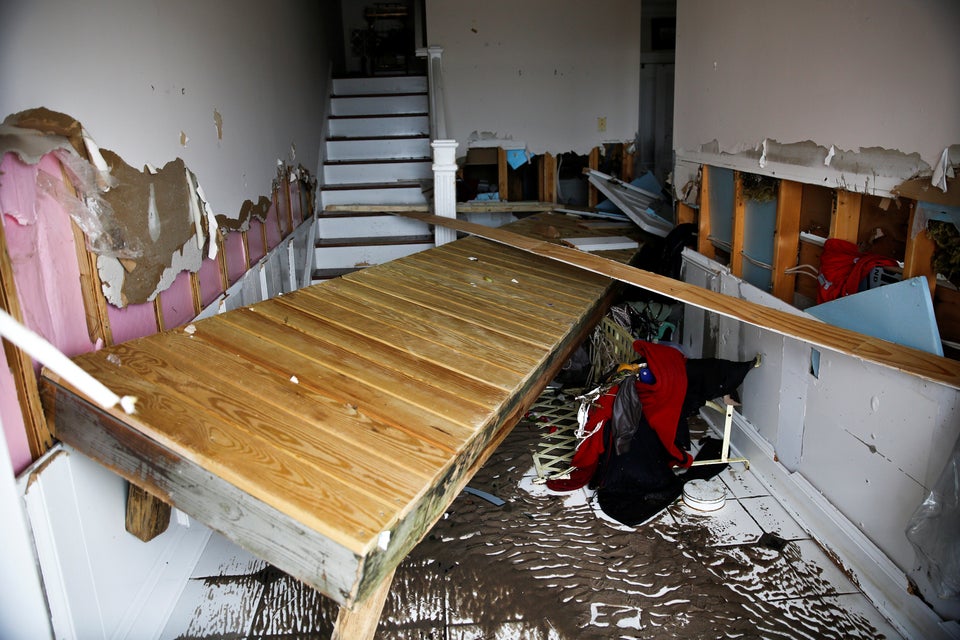
HONG KONG ― The world’s most powerful storm this year battered this skyscraper-studded metropolis on Sunday, collapsing bamboo scaffolding, tearing the corner off a building and slamming the waterfront with nearly 13-foot surges.
Typhoon Mangkhut’s winds reached roughly 106 miles per hour as the storm, upgraded to a full-blown hurricane on Sunday morning, barreled westward into China’s Guangdong Province, forging a deadly path.
Waves from then-Super Typhoon Mangkhut, named for the Thai word for the mangosteen fruit, swept a woman out to sea in Taiwan on Friday. Earlier on Saturday, the storm left dozens dead in the Philippines as it lashed Luzon with sustained winds of over 105 miles per hour and gusts of nearly 162 miles per hour and inundated the archipelago’s northern island with floodwaters.
The Philippines was expected to suffer the worst damage. Nearly 11 million Filipino families last year rated themselves as in poverty in a survey, a marked increase from the year before, and photos posted online showed the tin roofs ripped from shacks on Saturday. The country remains haunted by the disaster of Super Typhoon Haiyan, which left more than 6,000 dead in November 2013.
In Guangzhou, Guangdong’s most populous city, the winds tore down scaffolding and pinned people walking outside to the ground. Officials at two nuclear plants on the storm’s route into the mainland said they were “in combat readiness” as the hurricane made landfall.
The storm comes as Hurricane Florence drenched the Carolinas in the United States, weakening from a terrifying Category 4 to a Category 1 as it made landfall Friday morning. As of Saturday afternoon, the storm had knocked out power to nearly 930,000 homes and businesses and left multiple people dead.
“Typhoon Mangkhut is a huge monster with very similar strengths as Hurricane Florence,” said Yuan Xu, an associate professor at the Chinese University of Hong Kong.

Yet he expected the damage to Hong Kong ― the so-called world city of Asia and a major trading and banking hub ― to be limited. The drainage system is built to handle tropical storm surges, and the city’s towers are designed to sway in powerful gusts. The city began building electrical cable tunnels in 1988, so many of its power lines are underground.
“The city has learned from past lessons to get itself well prepared,” he said. “Strong wind is not expected to cause significant, if any, disruption of electricity supply.”
On Saturday, Hong Kong’s narrow, bustling streets emptied out early. At 6 p.m., the Hong Kong Observatory issued a Signal No. 3, a weather advisory indicating tropical depression-strength winds were expected.
By then, shopkeepers had secured storefront windows with X’s of masking tape. Airlines canceled hundreds of flights. Grocery store shelves lay bare as residents of the densely populated Chinese autonomous territory of over 7 million people rushed to buy essentials. Atop Victoria Peak, the scenic mountain overlook, a uniformed guide urged throngs of tourists streaming off a tram to quickly take pictures and go as the sun sank toward Guangdong.
“Typhoon is coming,” he said. “Hurry.”
Just before midnight, the observatory warned of a “severe threat to the region,” with the storm still about 267 miles southeast. The official meteorological service upgraded the typhoon to a No. 8 gale ― indicating a tropical storm ― at 1:10 a.m., forcing a total shutdown of the city.
At 10:45 a.m., the observatory declared the storm a signal No. 10 ― a full-on hurricane. Fifteen minutes later, Mangkhut was centered an alarming 93 miles south of the city.
Despite the preparedness, hotel staff in the Lan Kwai Fong area of central Hong Kong warned guests to charge phones and stock up on foodstuffs and water. By Sunday evening, the city had yet to experience any major power outages. But the observatory said “destructive storm to hurricane force winds” remained.
“Typhoon Mangkhut is a huge monster with very similar strengths as Hurricane Florence.”
- Yuan Xu, Chinese University of Hong Kong
It’s difficult for scientists to directly connect powerful storms to rising global temperatures around the planet. But a team of researchers from New York’s Stony Brook University, Lawrence Berkeley National Laboratory in Washington and the U.S. National Center for Atmospheric Research reported that Hurricane Florence would likely soak the Carolinas with 50 percent more rain than it would have without climate change, according to their study.
The team used a computer model to compile two sets of forecasts, one with observed atmospheric conditions and sea surface temperatures and the other stripped of the warming already resulting from climate change.
No such research has yet come out on Typhoon Mangkhut. But Katharine Hayhoe, an atmospheric scientist and professor at Texas Tech University, said the storm demonstrates the kind of extreme weather expected to become more frequent as record fossil fuel emissions increase warming.
“We do know that, on average, climate change is making storms stronger, causing them to intensify faster, increasing the amount of rainfall associated with a given storm, and even making them move more slowly,” she said.
This story has been updated to reflect the latest information on the storms.
CORRECTION: This story previously misstated the strength of Typhoon Mangkhut as it approached Hong Kong. The storm is no longer a super typhoon.

